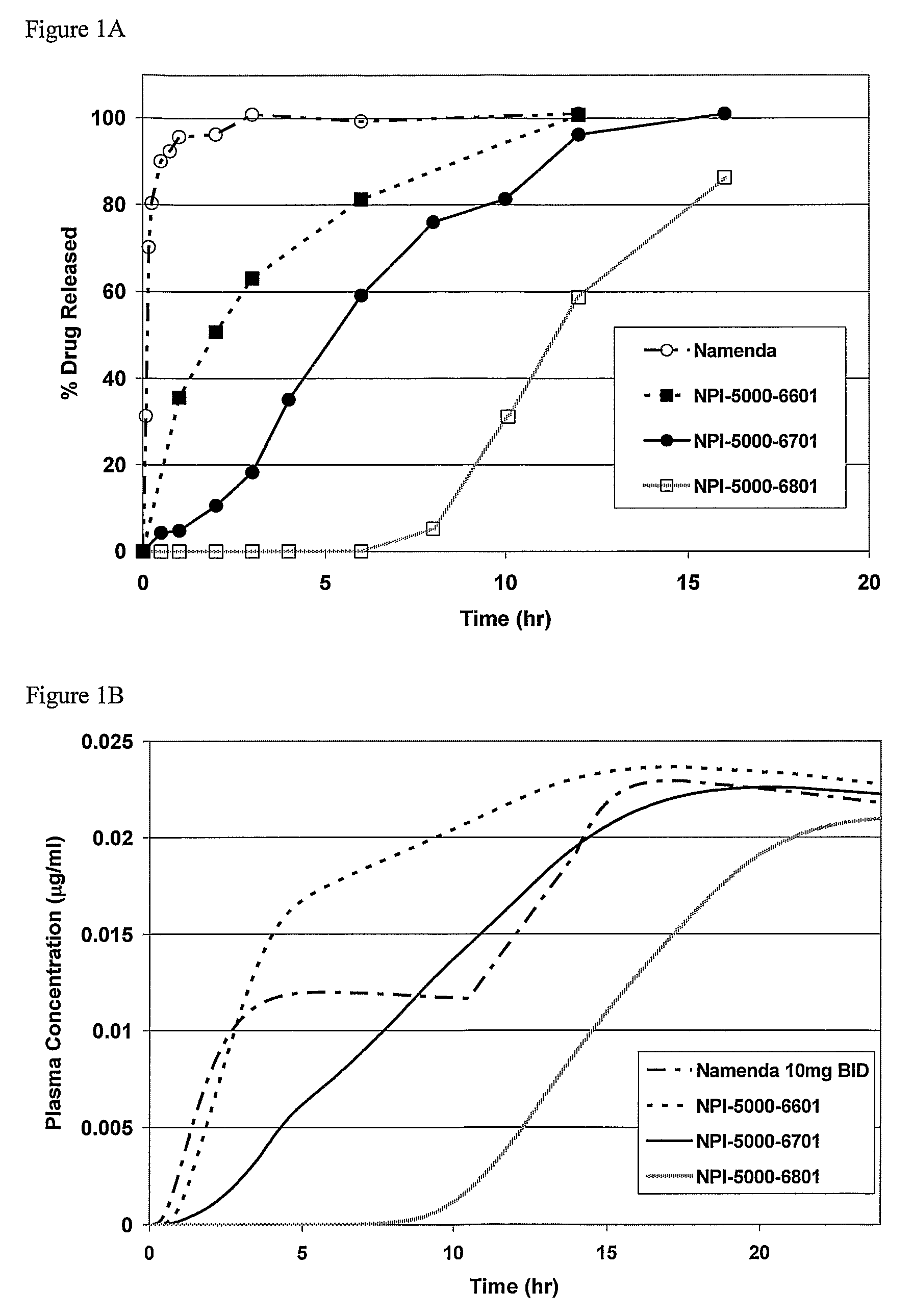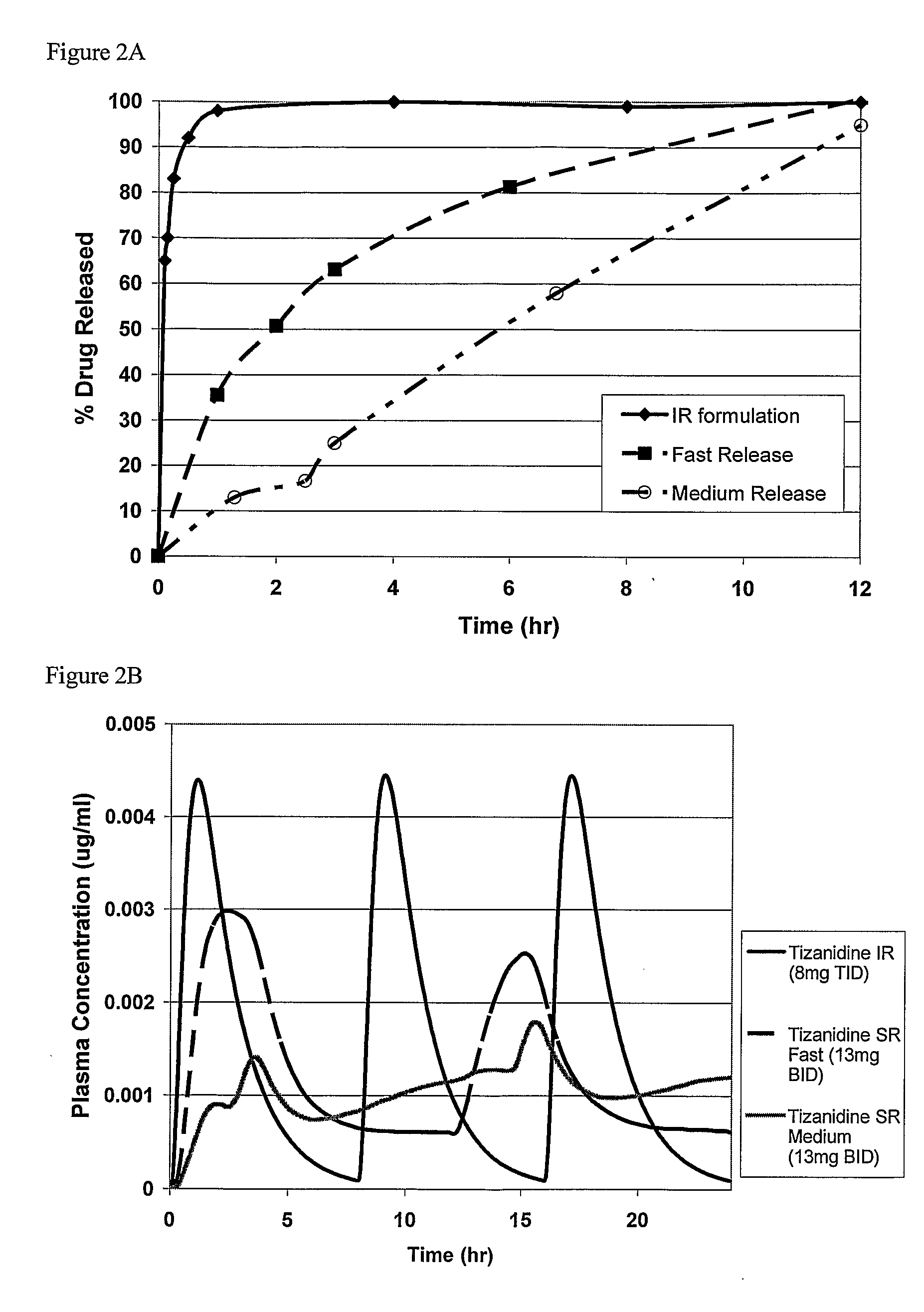Combinations Therapy for Treatment of Demyelinating Conditions
a demyelinating condition and combination therapy technology, applied in immunology, antibody medical ingredients, peptide/protein ingredients, etc., can solve the problems of scarring and damage to the underlying nerve fibers, loss of electrical insulation, and progressive neurological impairment, so as to maximize the therapeutic benefit, minimize side effects, and reduce the variability of concentration ratios
- Summary
- Abstract
- Description
- Claims
- Application Information
AI Technical Summary
Benefits of technology
Problems solved by technology
Method used
Image
Examples
example 1
Treatment with Memantine and Interferon-β1 (AVONEX™ REBIF™ and BETASERON™)
Animal Models and Methods
[0186]Animal Models. The current standard model for testing MS drugs is the Chronic relapsing experimental allergic Encephalomyelitis (EAE) mouse model (Wisniewski, et al., Ann Neurology 1: 144-148 (1977), Bolton et al., Int. Arch. Allergy Immunol. 114: 74-80, 1997).
[0187]Procedure: Male Biozzi mice, weighing 25-30 g, receive in each flank 0.15 ml of an emulsion containing lyophilised mouse spinal cord, Freund's complete adjuvant and phosphate buffered saline followed 7 days later by reinoculation at an adjacent site. Between 15 and 22 days after the initial inoculation, sensitised animals suffer body weight loss, hind limb weakness and paralysis. The symptoms resolve, over a 7 day period, and mice enter a remission phase followed, approximately 40 days after inoculation, by a relapse and return of neurological deficits. Neurological signs again remit and return approximately 60 days p...
example 2
Treatment with Memantine and Glatiramer Acetate (COPAXONE™)
[0192]EAE mouse model is established by procedures as described in Example 1 of the instant specification
[0193]Brain and spinal tissues can be removed for histological analysis of the extent of inflammatory cell infiltration by light microscopy following haematoxylin and eosin staining of sections.
[0194]Treatment. Cohorts are treated in 4 arms with 2-4 dose ranges of each drug and a placebo, at a compensated dose for animal size, metabolism and circulation, or about ⅙ the mg / kg equivalence. Arm 1: saline, Arm 2: memantine; Arm 3: glatiramer acetate; Arm 4: memantine plus glatiramer acetate. These arms are repeated at 2 dose ranges of both memantine and glatiramer acetate to measure the dose response relationship.
[0195]Study Assessment. Animals are assessed for both arresting inflammation, neuronal degeneration, neurocognitive score and neuromuscular decay. Blood and tissue is analyzed for known surrogate markers.
[0196]Result...
example 3
Treatment with Memantine and Natalizumab (ANTEGREN™)
[0197]EAE mouse model is established by procedures as described in Example 1 of the instant specification Brain and spinal tissues can be removed for histological analysis of the extent of inflammatory cell infiltration by light microscopy following haematoxylin and eosin staining of sections.
[0198]Treatment. Cohorts are treated in 4 arms with 2-4 dose ranges of each drug and a placebo, at a compensated dose for animal size, metabolism and circulation, or about ⅙ the mg / kg equivalence. Arm 1: saline, Arm 2: memantine; Arm 3: natalizumab; Arm 4: memantine plus natalizumab. These arms are repeated at 2 dose ranges of both memantine and natalizumab to measure the dose response relationship.
[0199]Study Assessment. Animals are assessed for both arresting inflammation, neuronal degeneration, neurocognitive score and neuromuscular decay. Blood and tissue is analyzed for known surrogate markers.
[0200]Results: EAE animals taking both memant...
PUM
| Property | Measurement | Unit |
|---|---|---|
| temperature | aaaaa | aaaaa |
| concentrations | aaaaa | aaaaa |
| time | aaaaa | aaaaa |
Abstract
Description
Claims
Application Information
 Login to View More
Login to View More - R&D
- Intellectual Property
- Life Sciences
- Materials
- Tech Scout
- Unparalleled Data Quality
- Higher Quality Content
- 60% Fewer Hallucinations
Browse by: Latest US Patents, China's latest patents, Technical Efficacy Thesaurus, Application Domain, Technology Topic, Popular Technical Reports.
© 2025 PatSnap. All rights reserved.Legal|Privacy policy|Modern Slavery Act Transparency Statement|Sitemap|About US| Contact US: help@patsnap.com



